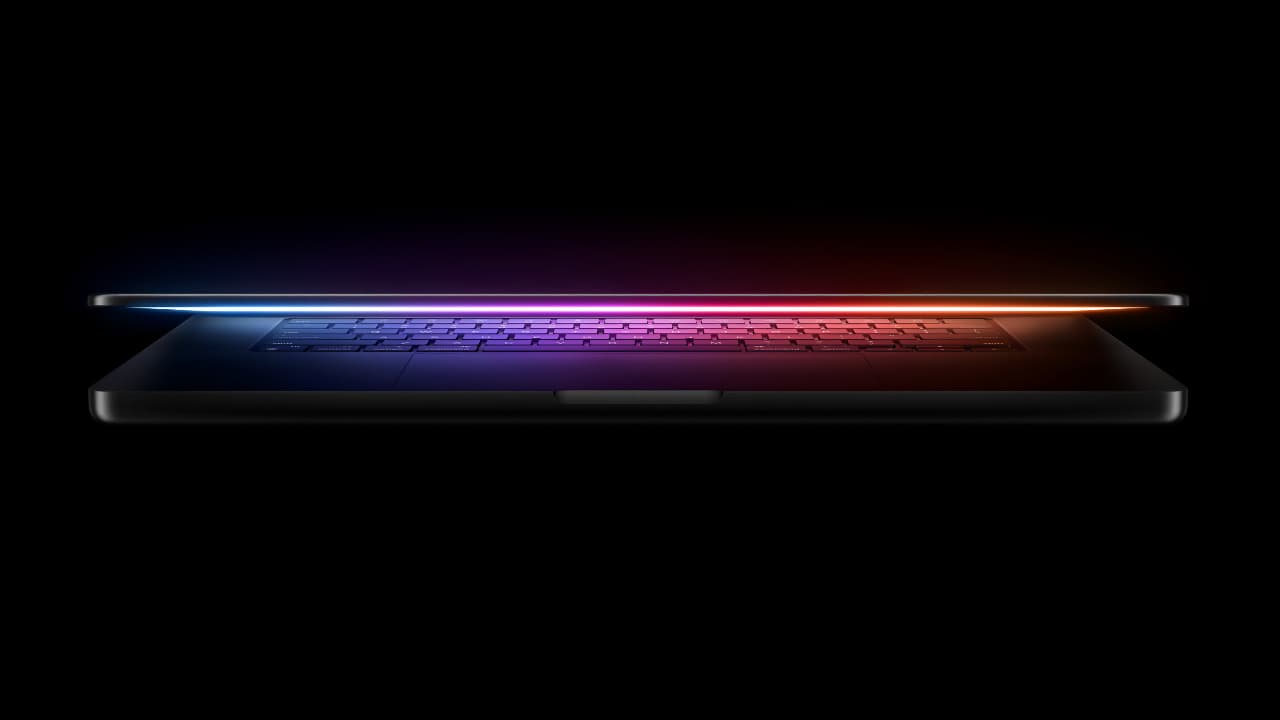
The third in Apple’s triptych of new Macs is the eagerly anticipated M4 MacBook Pro, which adds some serious power to the company’s laptop range.
And so the M4 Mac line-up is complete for now at least. As far as we know the announcement of the new M4-powered MacBook Pro is it for the week and there is nothing substantial hiding in the wings . As far as we know… There’s always room for the press release equivalent of ‘One more thing…’ as anyone looking for a new Mac Studio will be fervently hoping.
So, to the new MacBook Pro. Now available in space black and silver finishes, the entry-level 14-inch MacBook Pro adds the M4 chip and three Thunderbolt 4 ports. Like the rest of the range it now starts with 16GB of memory, and begins at $1599.
The 14- and 16-inch models with M4 Pro and M4 Max offer Thunderbolt 5 ports that more than double transfer speeds up to 120 Gb/s, enabling faster external storage, expansion chassis, and powerful docking and hub solutions. All MacBook Pro models feature an HDMI port that supports up to 8K resolution, a SDXC card slot, a MagSafe 3 port for charging, and a headphone jack, along with support for Wi-Fi 6E and Bluetooth 5.3.
All models include a Liquid Retina XDR display with the same new nano-texture display option that is available on the new iMacs. This features up to 1000 nits of brightness for SDR content. It also has the 12MP Center Stage camera, along with (drum roll please) up to 24 hours of battery life, the longest ever in a Mac.
There are three models:
- MacBook Pro with M4: 14in starts at $1599
- MacBook Pro with M4 Pro: 14in starts at $1999; 16in at $2499
- MacBook Pro with M4 Max: 16in starts at $3499

New 14-inch MacBook Pro with M4
Featuring a more powerful 10-core CPU, with four performance cores and six efficiency cores, and a faster 10-core GPU, the new MacBook Pro starts with 16GB of faster unified memory with support for up to 32GB, along with 120GB/s of memory bandwidth. Apple says the MacBook Pro is up to 1.8x faster than the 13-inch MacBook Pro with M1 for tasks like editing gigapixel photos. More demanding workloads like rendering complex scenes in Blender are up to 3.4x faster.
A Neural Engine that’s over 3x more powerful than in M1 makes it ideal for running features in Apple Intelligence and other AI workloads. The M4 model also supports two high-resolution external displays in addition to the built-in display, and now features three Thunderbolt 4 ports.
Here are some speed comparisons. And you'll note that throughout Apple starts with comparisons to Intel machines rather than Apple silicon.
- Up to 7x faster image processing in Affinity Photo when compared to the 13‑inch MacBook Pro with Core i7, and up to 1.8x faster when compared to the 13-inch MacBook Pro with M1.
- Up to 10.9x faster 3D rendering in Blender when compared to the 13‑inch MacBook Pro with Core i7, and up to 3.4x faster when compared to the 13‑inch MacBook Pro with M1.
- Up to 9.8x faster scene edit detection in Adobe Premiere Pro when compared to the 13‑inch MacBook Pro with Core i7, and up to 1.7x faster when compared to the 13‑inch MacBook Pro with M1.
MacBook Pro with M4 Pro
Pro Squared, surely? M4 Pro features a powerful 14-core CPU with 10 performance cores and four efficiency cores for a jump in multicore performance, along with up to a 20-core GPU that is twice as powerful as the bog standard M4. With M4 Pro, the new MacBook Pro gets a massive 75% increase in memory bandwidth over the prior generation — double that of any AI PC chip, the company says bullishly.
Here’s the use case performance stuff again, with the skew towards the science-based perhaps telling you where Apple is targeting this most.
- Up to 4x faster scene rendering performance with Maxon Redshift when compared to the 16-inch MacBook Pro with Core i9, and up to 3x faster when compared to the 16-inch MacBook Pro with M1 Pro.
- Up to 5x faster simulation of dynamical systems in MathWorks MATLAB when compared to the 16-inch MacBook Pro with Core i9, and up to 2.2x faster when compared to the 16-inch MacBook Pro with M1 Pro.
- Up to 23.8x faster basecalling for DNA sequencing in Oxford Nanopore MinKNOW when compared to the 16-inch MacBook Pro with Core i9, and up to 1.8x faster when compared to the 16-inch MacBook Pro with M1 Pro.
MacBook Pro with M4 Max

Hold onto your hats. The newly announced M4 Max chip takes things up to a 16-core CPU, up to a 40-core GPU, over half a terabyte per second of unified memory bandwidth, and a Neural Engine that is over 3x faster than M1 Max. With M4 Max, MacBook Pro delivers up to 3.5x the performance of M1 Max. It also supports up to 128GB of unified memory, so developers can easily interact with LLMs that have nearly 200 billion parameters. And with the powerful Media Engine in M4 Max, which features two ProRes accelerators, MacBook Pro performance is billed as amazing even when taking 4K120 fps ProRes video captured with the new iPhone 16 Pro and editing it in Final Cut Pro.
Here’s the comparison stuff.
- Up to 7.8x faster scene rendering performance with Maxon Redshift when compared to the 16-inch MacBook Pro with Intel Core i9, and up to 3.5x faster when compared to the 16-inch MacBook Pro with M1 Max.
- Up to 4.6x faster build performance when compiling code in Xcode when compared to the 16‑inch MacBook Pro with Intel Core i9, and up to 2.2x faster when compared to the 16‑inch MacBook Pro with M1 Max.
- Up to 30.8x faster video processing performance in Topaz Video AI when compared to the 16‑inch MacBook Pro with Intel Core i9, and up to 1.6x faster when compared to the 16-inch MacBook Pro with M1 Max.
There was one surprise announcement too. Not quite a 'One more thing...' but still a nice little nugget. While the MacBook Air remains only available in M2 and M3 flavours, it has had its base spec memory doubled to 16GB while keeping the starting price at $999. Apple says it is the world's best selling laptop and it obviously wants to keep it that way.
tl;dr
- Apple introduces the M4 MacBook Pro, available in space black and silver, starting at $1599 for the 14-inch model and featuring significant performance enhancements.
- The 14- and 16-inch models come with Thunderbolt 5 ports, HDMI supporting up to 8K resolution, an SDXC card slot, and a MagSafe 3 charging port, along with Wi-Fi 6E and Bluetooth 5.3 support.
- All models feature a Liquid Retina XDR display with up to 1000 nits brightness and offer up to 24 hours of battery life, the longest ever in a Mac.
- The M4 models significantly outperform previous versions, achieving up to 7x faster image processing and 10.9x faster 3D rendering compared to Intel-based machines.
- The M4 Pro and M4 Max models boost capabilities further with enhanced processing power, higher memory bandwidth, and support for more demanding applications, including DNA sequencing and dynamic system simulations.
Tags: Post & VFX Technology Featured Apple


Comments